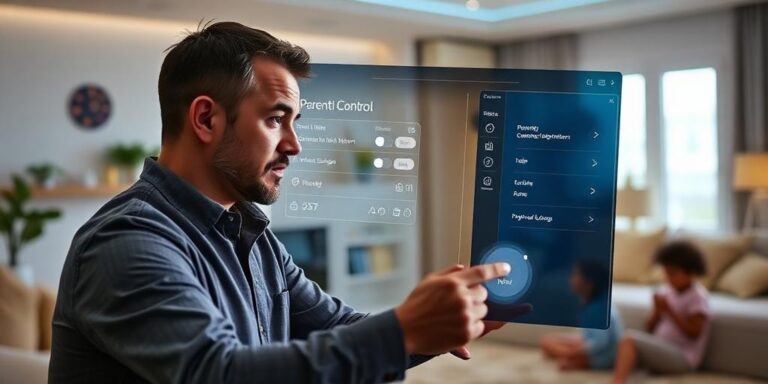Protecting Children in the Age of Smart Gadgets (2025 Parental Controls)
The proliferation of smart gadgets in our homes presents unprecedented opportunities and challenges for families. As we navigate the digital landscape of 2025, it’s crucial to understand the risks these devices pose to children and how to mitigate them effectively. This article provides a comprehensive guide to parental controls and strategies for safeguarding children in an increasingly connected world.
Understanding the Risks
Smart gadgets, from smart TVs and voice assistants to tablets and smartphones, offer educational content, entertainment, and connectivity. However, they also expose children to potential dangers, including:
- Inappropriate Content: Unfiltered access to explicit or violent material.
- Cyberbullying: Increased opportunities for online harassment and abuse.
- Privacy Concerns: Collection and misuse of personal data.
- Screen Addiction: Excessive screen time leading to health and developmental issues.
- Online Predators: Exposure to individuals who may exploit or harm children.
Implementing Robust Parental Controls
Parental controls are essential tools for managing and limiting children’s access to potentially harmful content and interactions. Here’s a breakdown of the key features and how to use them:
1. Device-Level Controls
Most smart devices come with built-in parental control settings. These allow you to:
- Set Screen Time Limits: Restrict the amount of time a child can use the device.
- Filter Content: Block access to inappropriate websites, apps, and videos.
- Monitor Activity: Track usage patterns and view browsing history.
- Disable Features: Turn off cameras, microphones, or location services.
2. Router-Level Controls
Your home router can also be configured to provide network-wide parental controls. This approach offers several advantages:
- Centralized Management: Apply settings to all devices connected to your network.
- Content Filtering: Block specific websites or categories of content.
- Time-Based Restrictions: Set internet access schedules.
- Usage Monitoring: Track overall internet usage patterns.
3. App-Specific Controls
Many apps and platforms offer their own parental control features. These can be particularly useful for managing social media and communication apps.
- Privacy Settings: Adjust privacy settings to limit the sharing of personal information.
- Contact Management: Restrict who can communicate with your child.
- Reporting Tools: Teach children how to report inappropriate content or behavior.
4. Third-Party Parental Control Apps
Several third-party apps provide comprehensive parental control solutions. These apps often offer advanced features, such as:
- Location Tracking: Monitor your child’s whereabouts.
- Social Media Monitoring: Track activity on social media platforms.
- Alerts and Notifications: Receive alerts when your child accesses restricted content or engages in risky behavior.
Strategies for Effective Parental Control
Implementing parental controls is just the first step. To ensure your child’s safety, it’s essential to adopt a holistic approach that includes:
- Open Communication: Talk to your children about the risks of the internet and encourage them to come to you with any concerns.
- Education: Teach children about online safety, privacy, and responsible digital citizenship.
- Modeling Behavior: Set a good example by using technology responsibly and being mindful of your own screen time.
- Regular Monitoring: Stay informed about the apps and websites your children are using.
- Adapting Strategies: As children grow and technology evolves, adjust your parental control strategies accordingly.
Staying Ahead of the Curve
The digital landscape is constantly changing. To stay ahead of potential risks, it’s essential to:
- Stay Informed: Keep up-to-date with the latest online safety threats and parental control tools.
- Engage with Experts: Consult with cybersecurity professionals, educators, or parenting experts for guidance.
- Participate in Community Forums: Connect with other parents to share tips and experiences.
Conclusion
Protecting children in the age of smart gadgets requires a proactive and informed approach. By implementing robust parental controls, fostering open communication, and staying ahead of emerging threats, parents can create a safe and enriching digital environment for their children.




